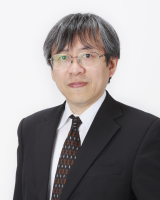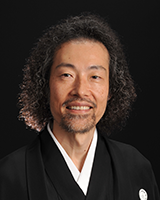Keynotes & Symposiums
Trends in Standardization of Multimedia Coding
Digital video explosion took place when analogue television evolved into digital one employing the international standards, which was also a big change in consumer electronics. Since then, the requirements from CE industry have motivated the developments of the advanced standards and vice versa. The performance of video compression has repeatedly been doubled with the developments of majorvideo coding standards and the scale of video has been expanded and diversified from mobile-sized video to UHDTV. Further compression is being pursued driven by the industry requirements. The forms of video representation have also been diversified such as 3D, Virtual, Augmented and Mixed Reality applications handling natural video and synthesized one. There are ongoing standardization activities to expand the forms of image/video including plenoptics and to assist the use of the media including smart delivery and search/retrieval. This talk will present the current trends in standardization of multimedia technologies.
Mr. Kohtaro Asai

Communication Systems Engineering Center, Mitsubishi Electric Corp., Japan
Mr. Kohtaro Asai has received BE in electric engineering from the University of Tokyo in 1981. He has been working with Mitsubishi Electric Corporation, where he is currently a chief engineer. He has been working mainly on video coding and transmission with their applications to communication/broadcast systems.
He has been engaged in the international standardization activities since 1985. The activities include video coding for teleconference, mobile communication, broadcast and digital storage media. Since 2006 he has been ISO/IEC JTC 1/SC 29 Chair.
He received young engineer award, achievement award from IEICE, paper award, authors award from ITE, for his work in the field of video coding. He received award from Ministry of Industry and Trade for his contribution to international standardization. He is a fellow of IEICE.
Audio Coding and Its Applications: From MPEG-1 to Smartphone
This talk presents an overview of MPEG Audio standardization in the last 25 years. MPEG Audio started its history in 1989 and MPEG-1, MPEG-2, and MPEG-4, to name a few, have been standardized. Depending on the targeted application, the requirements such as the target bitrates, signal coverage are different and new standards have been developed. As one of the most widely used audio coding standards, MPEG-2/-4 AAC are explained, which is now recognized as the standard framework of audio-data compression. Some specific technologies are highlighted following the framework. The Silicon Audio, which is the origin of all solid-state portable audio players and opened the way to today’s smartphones, is presented as a successful application.
Dr. Akihiko Sugiyama

Information and Media Processing Labs., NEC, Japan
Dr. Akihiko Sugiyama (a.k.a. Ken Sugiyama), affiliated with NEC Data Science Research Labs., has been engaged in a wide variety of research projects in signal processing such as audio coding and signal enhancement. His team developed the world's first Silicon Audio in 1994, the ancestor of iPod. He served as Chair of Audio and Acoustic Signal Processing Technical Committee, IEEE Signal Processing Society (SPS) [2011-2012], as associate editors for several journals such as IEEE Transactions on Signal Processing [1994-1996], as the Secretary and a Member at Large to the Conference Board of SPS [2010-2011], as a member of the Awards Board of SPS [2015- ], and as the Chair of Japan Chapter of SPS [2010-2011]. He was a Technical Program Chair for ICASSP2012. He has contributed to 16 chapters of books and is the inventor of over 150 registered patents with more pending applications in the field of signal processing in Japan and overseas. He received 13 awards such as the 2002 IEICE Best Paper Award, the 2006 IEICE Achievement Award, and the 2013 Ichimura Industry Award. He is Fellow of IEEE and IEICE, and a Distinguished Lecturer in 2014 and 2015 for IEEE SPS. He is also known as a big host for a total of 75 internship students.